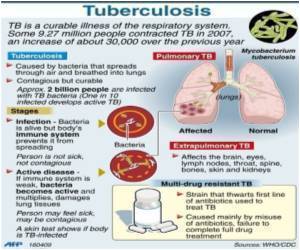
"Huge improvements in TB treatment, driven by a major shift in treatment from hospitals to local public health centres implementing the DOTS strategy, were largely responsible for this success."*
China is a major contributor to the TB pandemic, with 1 million new TB cases every year, accounting for 11% of all new cases globally. Two national surveys of tuberculosis prevalence in 1990 and 2000 showed that levels of TB were reduced by around 30% in the 13 provinces where the DOTS programme was adopted. However, national TB prevalence fell by just 19% over the decade.
Another survey was done in 2010 to re-evaluate the national TB burden, providing an opportunity to assess the effect of the nationwide expansion of the DOTS programme. Nearly 253 000 individuals aged 15 years and older were surveyed in 2010 at 176 investigation points chosen from all 31 mainland provinces. The results show that between 2000 and 2010, national TB prevalence fell by 57%—tripling the reduction of the previous decade.
During this time, 87% of the total decrease in prevalence was among cases already diagnosed with TB before the survey. The increase of known TB cases treated using DOTS rose from 15% in 2000 to 66% in 2010, and contributed to lower proportions of treatment default (from 43% to 22%) and re-treatment (from 84% to 31%).
According to the authors, "The DOTS programme has been much more effective in reducing the prevalence of tuberculosis in known cases than in new cases. Because the prevalence in known cases is already very low, future reduction in tuberculosis prevalence is likely to slow substantially unless control efforts in addition to the DOTS strategy are implemented, especially in earlier case detection and treatment and use of new instruments."
Advertisement
Source-Eurekalert















